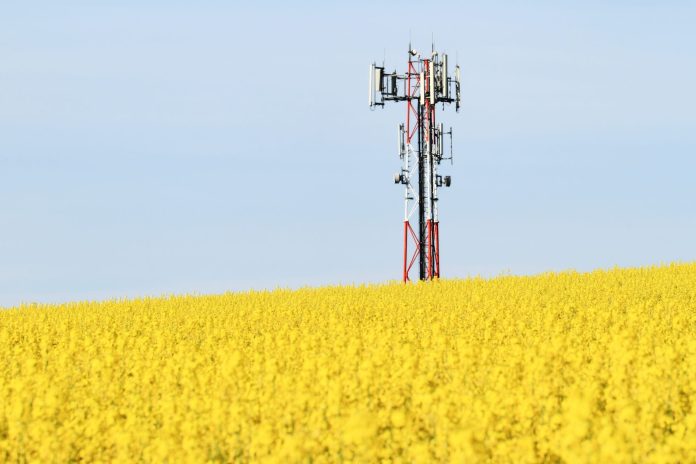The biggest fragmentation in smart agriculture is with base-line connectivity, which establishes the platform for the analytics and automation tools that will change farming.
“Connectivity is a neccessary evil,” says Pete DeNagy, president and co-founder, Internet of Things America. “No business is advantaged by conenctivity of itself, but by what’s rendered through it.”
In the US, in ‘this hard land’, the issue of connecivity is writ large, the same as in countries like Africa and Asia. There are 327 million people in the US, but 40 per cent of the land is home to just 3.3 per cent of the population.
“The density of Europe, say, is higher from a land-mass perspective – more people, less land,” he says.
Most of the US population is scattered along its coastline; the middle of the country tends to be reduced in cinema and song to a cliche of dusty towns and tumbleweeds. The business case for a cellular network has always hinged on user density.
“In rural Amercia, like everywhere, carriers are measured by their average revenue per user (ARPU). If densities are light, they are hard pressed to stand up cellular networks.”
Internet of Things America was set up to connect the unconnected in the country’s rural heartlands, where many workplaces are out of signal. Operators in the US, and other markets, make claims about countrywide population coverage.
But farmers are not cultivating people. “Carriers cover the farmhouse and not the fields,” says DeNagy. Farmers can’t bring light to their operations, with analytics and automation, if their fields are in digital darkness.
Internet of Things America will use whatever infrastructure it can to bring connectivity, but will default to LoRa-based low-power wide-area (LPWA) gear if nothing exists. A LoRa gateway supporting a LoRaWAN network in 902-928 MHz spectrum will give 10 kilometres of coverage in every direction, says DeNagy, equivalent to around 75,000 acres.
US IoT firm Senet, a fixture in the LoRaWAN firmament, settles on coverage of about 15 miles, in old money. Bruce Chatterley, chief executive at Senet, says: “Poor coverage in rural areas has impeded IoT adoption among the majority of farmers. Where [telecoms infrastructure] exists, cost and complexity of deployment can be prohibitive… LoRa products are changing the paradigm of farming and the way things are monitored and measured.”
Greater propagation and lower power, giving way to cheaper deployments, make LPWA technologies like LoRaWAN crucial for digitally-minded farming enterprises.
DeNagy rejoins. “You can deploy 20,000 sensors in that range. LTE infrastructure will be anywhere from $1 million, give or take; LoRa infrastructure is going to be a fiftieth of that. It is cost effective, especially compared with point-solution LTE infrastructure.”
He goes on: “But the same dynamics of density apply. If you’re looking to stand up a LoRa network for one sensor, well, you know, that dog doesn’t hunt, as we say down south – it just doesn’t work. But we can deploy a LoRa gateway and cover multiple farms concurrently.”
What about satellite? “We would only utilise satellite as backhaul for the LoRa gateway – and power the gateway itself with local power or with a solar array. The problem with satellite, like with LTE, is the pinging on the sensor diminishes the performance. It is one of the reasons LTE-M and NB-IoT were developed by 3GPP – that need for better battery life. LoRa sensors last for 10 years.”
Phil Skipper, head of IoT business development at Vodafone, representing the operator community in the red corner in the LPWA debate, puts exactly the same case for NB-IoT and LTE-M: lower power, wider coverage, and longer battery life adds up to cheaper deployments. At least versus LTE, and at least where the case for LTE has already been made.
“They run on the same radio as LTE – the posts are already up,” says Skipper. “But NB-IoT gives you greater penetration. It’s a stronger signal, a longer range – you get about three times the range on NB-IoT that you would on LTE. As you move into the rural areas, you get a gradual decline in bandwidth until it disappears, whereas NB-IoT is able to reach out and connect those devices without much infrastructure.”
In certain markets, notably the ‘low countries’, smart farming is an instant hit. “We switched-on Holland almost overnight – because it’s flat, with massive coverage. In some countries, you have problems with hill farming, where the topology is the problem rather than the range. But for most farming, especially arable and bulk livestock, you can reach most devices with NB-IoT.”
But LPWA networks won’t cut it, say some, if farming is to make use of the very latest analytics and automation tools.
This article is continued here. This is a serialised excerpt from a new editorial report from Enterprise IoT Insights, called Connecting Agriculture – the promise of smart farming and the challenge of connectivity’, which looks at development of IoT technologies in the farming and agricultural sectors. The full report, free to download, can be found here.

